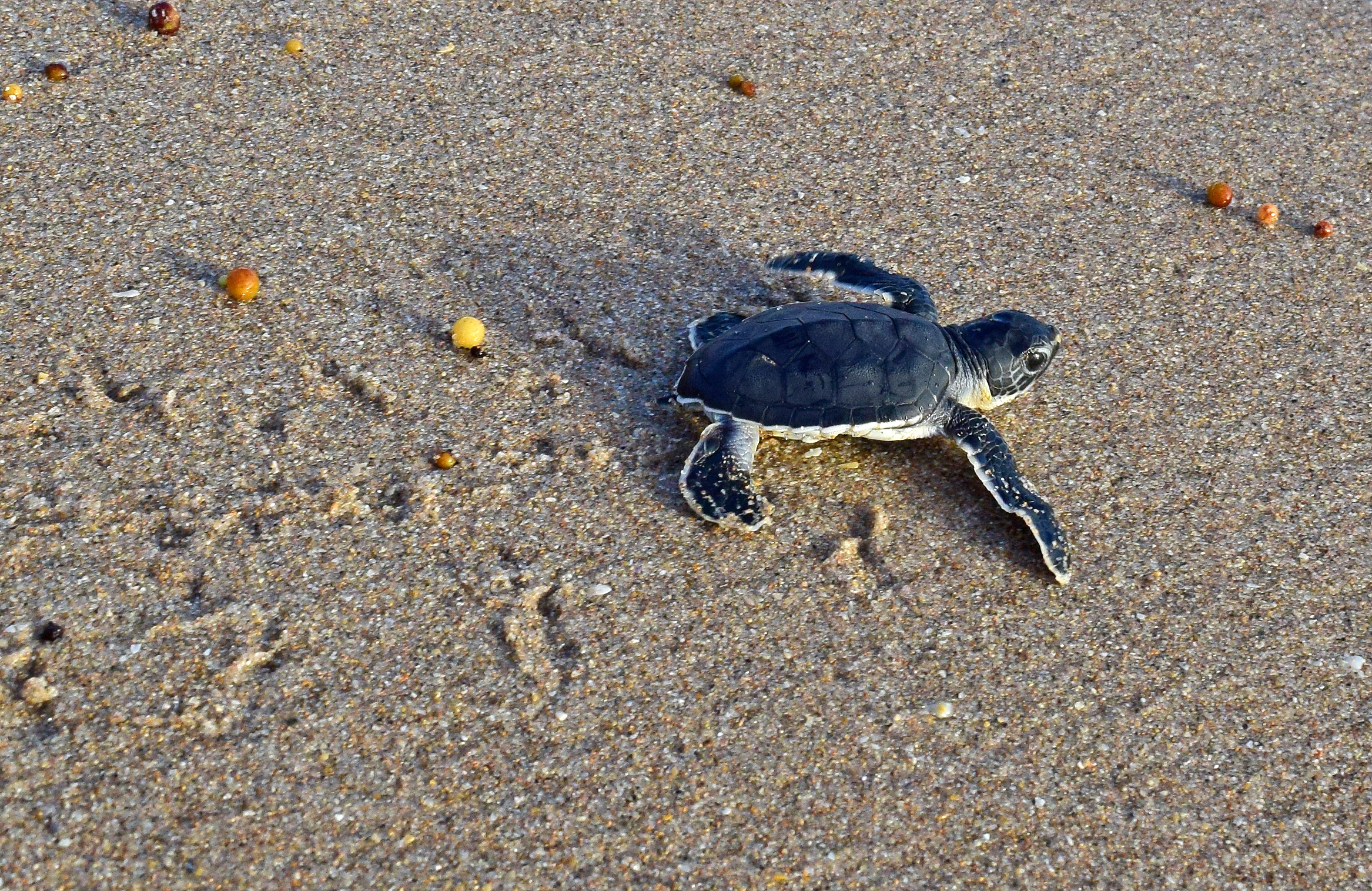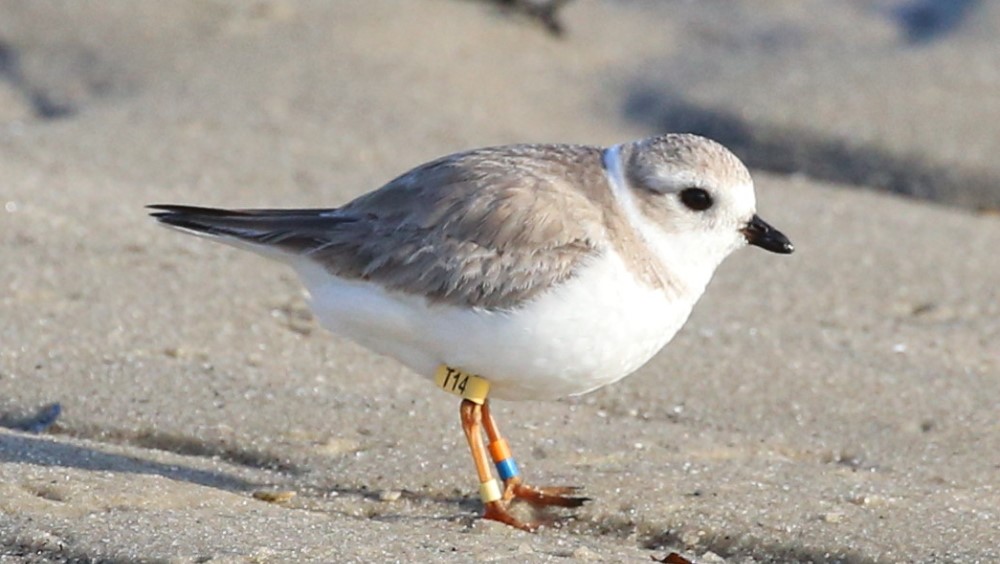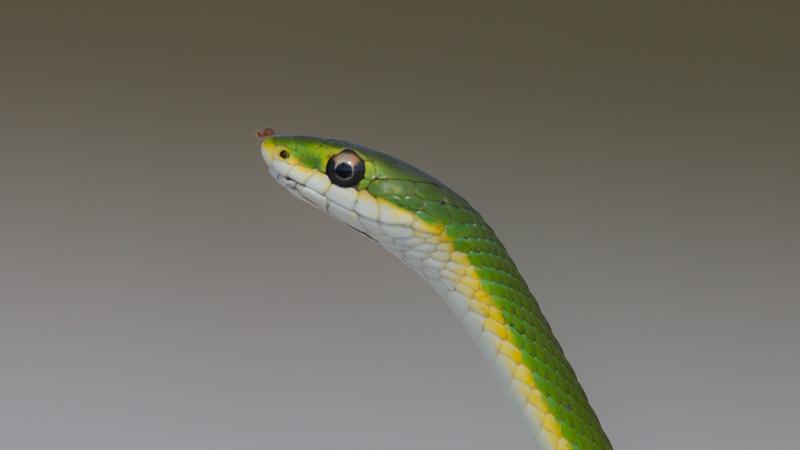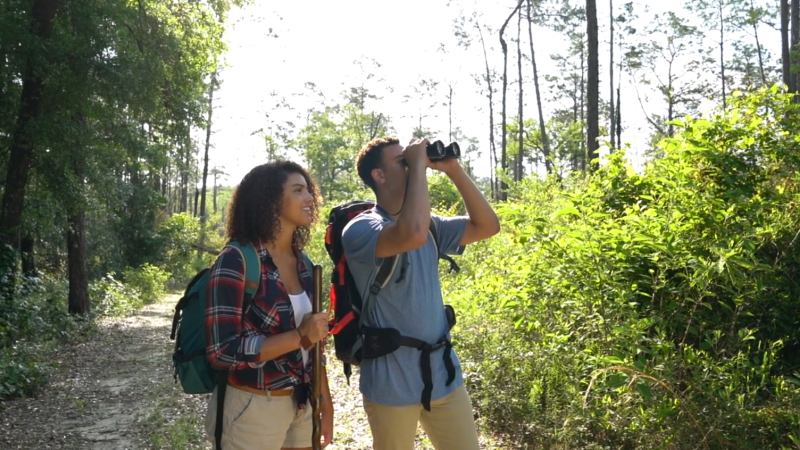
Sharing the Beach with Nesting Wildlife

There are more 100 miles of beaches protected by Florida State Parks, and they’re also important refuges for nesting wildlife.
If you plan on heading to the beach, check out these practical tips for making the beach safer for wildlife and their nests.

Sea Turtle Nesting Season
Florida is home to five species of sea turtles. Many of the of beaches protected by Florida State Parks provide nesting habitat for sea turtles. From March to October, thousands of mother sea turtles venture up from the water at night. They lay their eggs in the sand, often on the exact same beach where they were born.

At sea turtle nesting beaches such as John D. MacArthur Beach State Park and Cayo Costa State Park, staff and volunteers count and record sea turtle activity every morning. Each sea turtle species leaves a distinct crawl pattern in the sand that rangers use to identify the species and nest location.
These seasonal counts help biologists determine the success of conservation programs and plan for the future.
If you’re heading to the beach during nesting season, chances are you’re close by a nesting habitat. There are a few simple actions that everyone can take to make sure Florida's beaches are a safe place where turtle hatchlings begin their ocean journey.
- Give nesting adults and their hatchlings space and take care not to disturb them.
- Turn off artificial lighting near beaches at night during nesting season and use turtle-friendly lights approved by the Florida Fish and Wildlife Commission.
- Properly dispose of food items to decrease predation from wildlife.
- Properly dispose of debris like fishing line, netting and plastics.
- Keep obstacles such as beach furniture off the beach during nesting season.
- Participate in beach cleanup events.
- Avoid buying items derived from sea turtles.
- Buy a turtle license plate to raise money for the protection of sea turtles.
- Learn more about sea turtles and share what you learn with others.
Protecting Beach-Nesting Shorebirds
Seagulls hunting for a snack are a common sight at the beach, and brown pelicans are spectacular divers that plunge headfirst into the water for fish. However, there are other birds that depend on the beach for more than a meal.
Several species of shorebirds and seabirds make nests on Florida’s Atlantic and Gulf coasts. Habitat loss from coastal development has caused many of these birds to find refuge in state parks and other public lands, where they lay eggs on open beach or in dune vegetation.

Nesting birds are at the mercy of wind, waves, predators and human activity. Because the beach can be a tough place to be a baby bird, people can help by taking extra care not to disturb nest colonies. For example, giving a group of birds plenty of space will help deter them from flying off and leaving hatchlings exposed to the sun or other dangerous elements.
Just like with sea turtles, there are some simple steps you can take to give birds a better chance:
- Nests, eggs and chicks are camouflaged, and you won’t always see them. Do not go into areas posted with shorebird or seabird signs.
- On roads near the beach, drive carefully and watch for chicks on the roadway.
- Keep dogs on a leash and away from the beach and other areas where birds may be nesting. View Florida State Parks Pet Policy.
- Properly dispose of trash so it doesn't attract predators.
- Avoid flying kites near where birds may be nesting — birds can perceive the kite as a predator.
- If birds appear agitated, you’re probably too close.
This article was published in the Real Florida ℠ Connection, the Florida State Parks e-newsletter. Sign-up to get updates and stories from your state parks the first week of every month.


